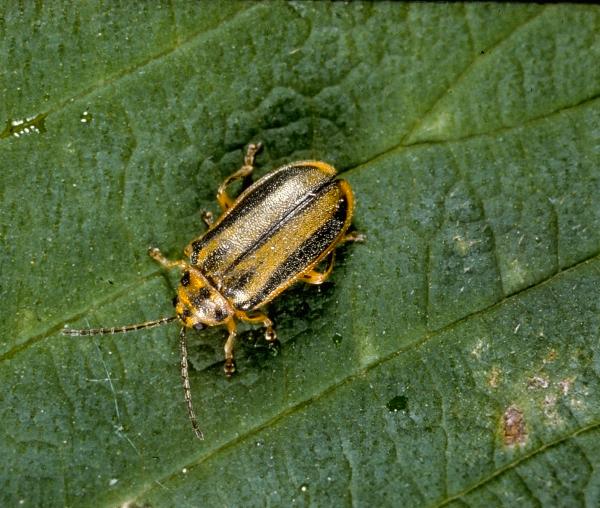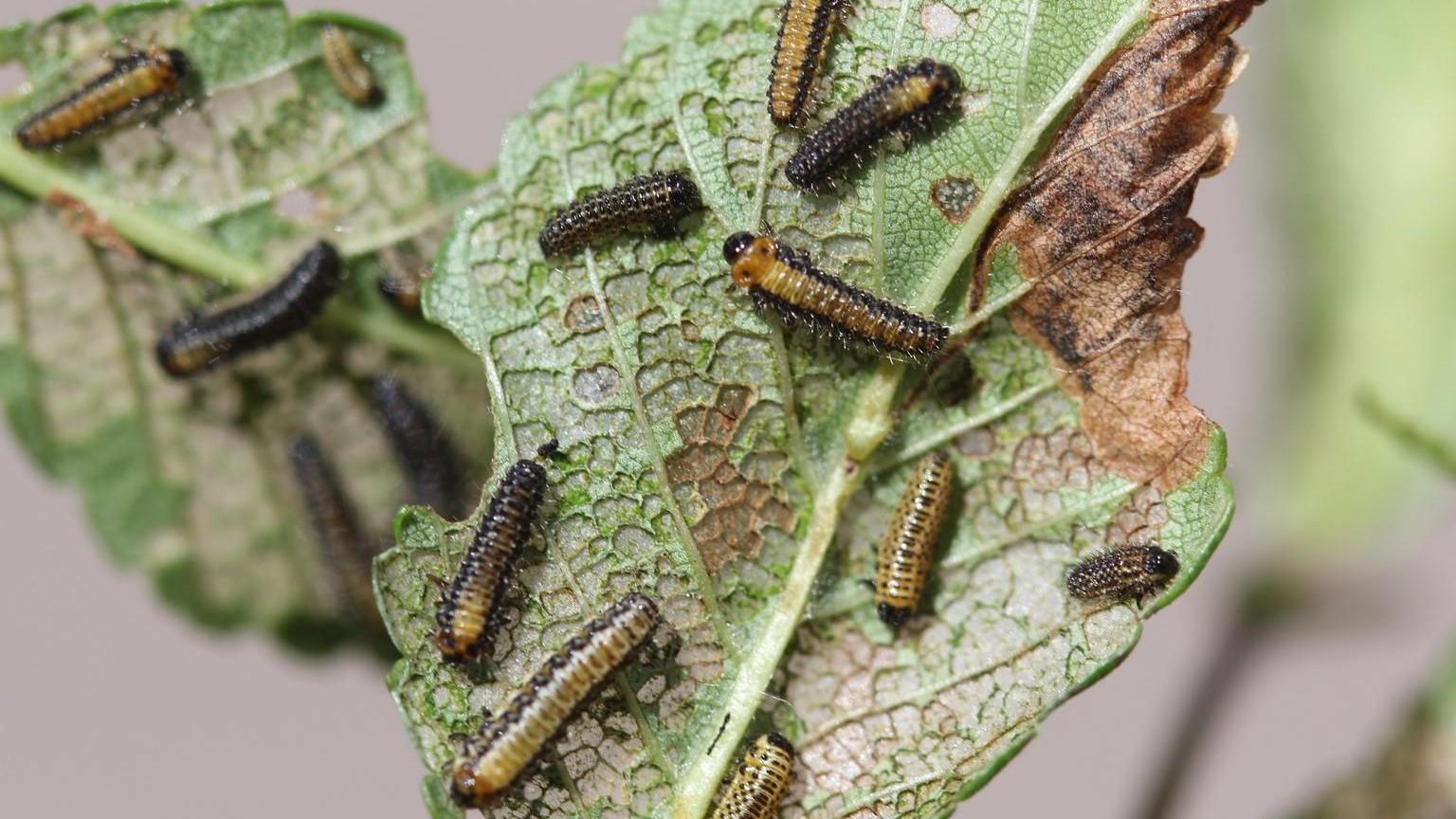Key points about elm leaf beetles
- The elm leaf beetle, Xanthogaleruca luteola, will feed on all species of native and introduced elm and zelkova.
- All stages of the elm leaf beetle develop on or near the elm tree.
- Adult beetles are about 1/4 inch long and range in color from yellow to olive green with a black stripe along each side of the back. These stripes may not be distinct.
- Adults feed on elm leaves. Eggs are laid in clusters of 5-25, usually on the undersides of leaves. They are yellow to white and spindle shaped.
- The immature beetles, called larvae, are six legged, wingless and are about ½ inch when mature. The color varies from black to dull yellow with a series of black spots or longitudinal stripes along the back. They usually feed on the lower leaf surface.
- Transformation of larvae into adults occurs in a stage called the pupa, which can be found in crotches of lower limbs, bark crevices, and in the soil and debris beneath the tree. Pupae are about 3 inches long, orange to yellow and do not move.
Damage
- Damage results from the feeding activities of adult and immature beetles on elm leaves. Larvae (immatures) feed for several weeks and produce characteristic skeletonization damage by feeding between the veins.
- Heavy feeding causes leaves to turn brown, wither and drop prematurely.
- Severe infestations can cause trees to develop an unsightly, scorched appearance.
- Damaged trees may put out a second flush of leaves that are also attacked.
- Repeated defoliation may reduce tree vigor and increase susceptibility to more serious pests such as the smaller European elm bark beetle which is responsible for spreading the Dutch elm disease fungus.
Life cycle
- In May when leaves are expanding on elm trees, adults vacate overwintering sites and move to the trees. Here they feed and lay eggs.
- Each female may lay up to 800 eggs during her lifetime.
- After about a week, the eggs hatch and larvae begin feeding on leaves.
- Upon reaching maturity, larvae migrate toward the base of the tree where they will complete development to adults. This transformation requires 1-2 weeks after which time new adults emerge, return to the leaves and begin feeding and egg laying.
- By mid to late summer, the second brood of larvae will have developed into overwintering adult beetles. These move to protected locations outdoors under bark or into indoor refuges such as attics. When beetles become active in the spring they may appear in large numbers inside of homes but cause no damage.


Management
- Contact a licensed arborist to treat infested trees.
- Adult beetles may be excluded from the home by screening, caulking, and weather stripping. Beetles that gain entry may be swept or vacuumed and disposed of.
Still have a question? Contact us at Ask Extension.
